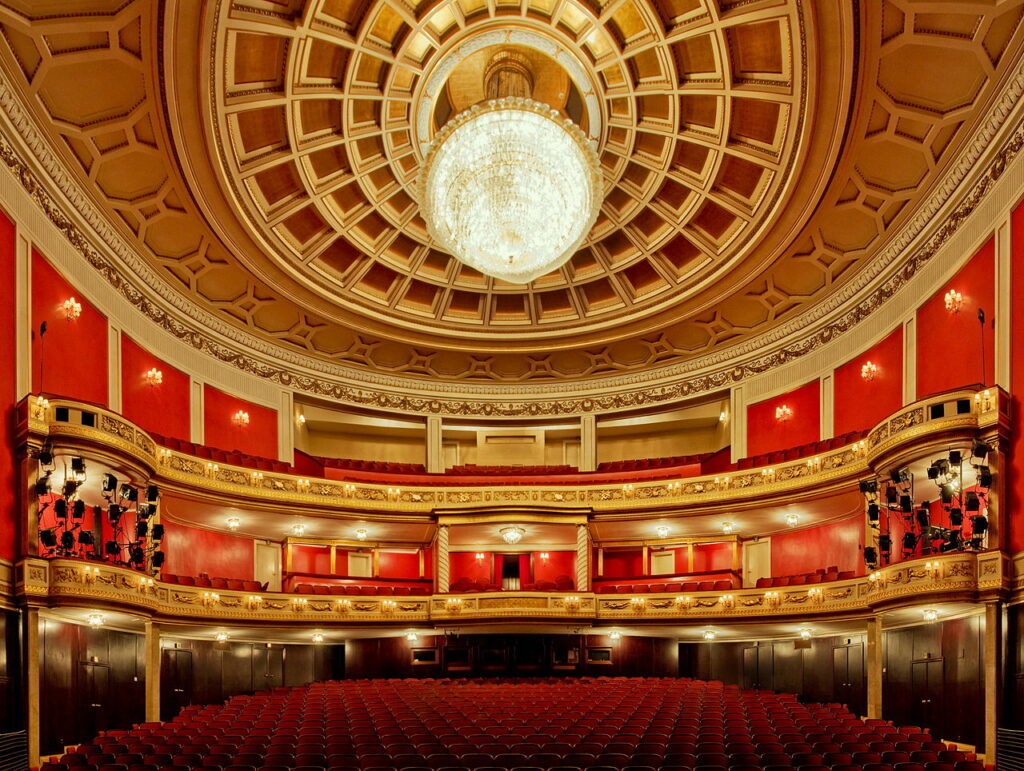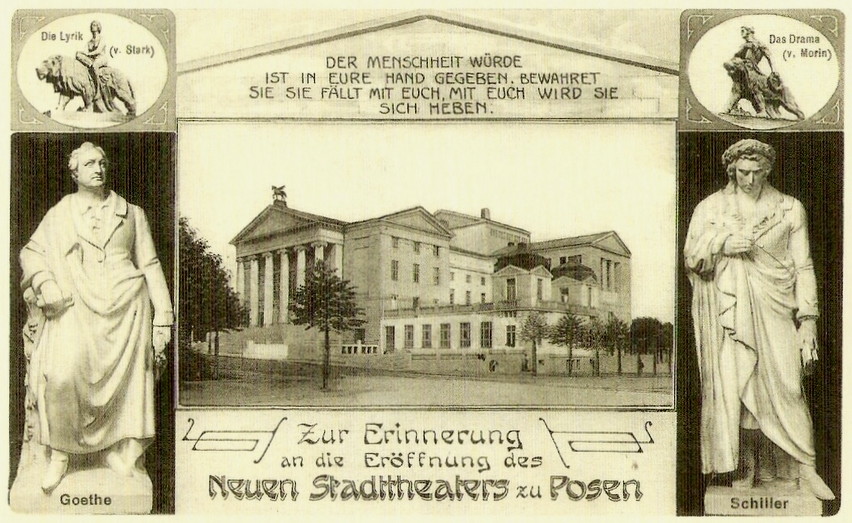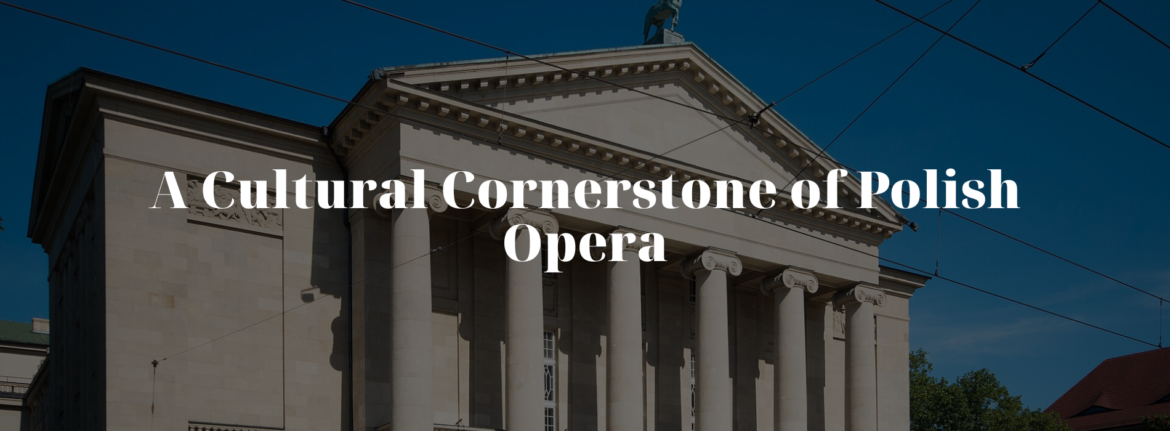The Stanisław Moniuszko Grand Theater in Poznań stands as one of Poland’s most significant cultural institutions, with a rich history dating back to the early 20th century. Its monumental building, located at 9 Fredry Street, serves not only as an opera house but also as a symbol of the city’s neoclassical architecture.
Historical Origins
The Grand Theater building was designed by German architect Max Littmann and constructed between 1909 and 1910. It was built on the fortress belt surrounding the city, in an area designated for the Castle District (Dzielnica Zamkowa), which was intended to become Poznań’s prestigious quarter, filled with parks and impressive public buildings. The theater’s facade is adorned with six massive Ionic columns, and its tympanum is crowned with a sculpture of Pegasus, symbolizing artistic inspiration. The inaugural performance took place on September 30, 1910, featuring Mozart’s „The Magic Flute.”


The Interwar Period
Following Poland’s regaining of independence in 1918, the Grand Theater came under Polish management in August 1919. The inaugural ceremony attracted many cultural luminaries of the time, including Kornel Makuszyński, Bolesław Gorczyński, and Zenon „Miriam” Przesmycki. The first premiere under Polish management was Stanisław Moniuszko’s „Halka,” performed on August 31, 1919. During the interwar period, the theater gained prominence through its ambitious repertoire and distinguished artists. Notable premieres included the world premiere of Feliks Nowowiejski’s opera „Baltic Legend” in 1924 and the Polish premiere of Karol Szymanowski’s ballet „Harnasie” in 1938. Directors such as Piotr Stermicz-Valcrociata and Zygmunt Latoszewski helped establish the theater’s high standing in European cultural circles.
World War II Period
During World War II, the Germans took over the building, operating it as the „Großes Haus.” The repertoire during this period was dominated by Richard Wagner’s works and Nazi propaganda pieces. The theater frequently hosted prominent Nazi officials, including Joseph Goebbels, Heinrich Himmler, and Robert Ley. Significant modifications were made to accommodate high-ranking visitors: two luxury boxes were replaced with a single box intended for Adolf Hitler, and a rotating stage and a three-ton chandelier were installed. The final German performance took place on August 29, 1944, after which the building was militarized and converted into a hospital for German soldiers. In 1945, the building served as a defensive position for German forces. Despite these challenging circumstances, the structure survived largely intact, allowing for a quick resumption of activities after the war, though many valuable instruments and costumes were either looted or destroyed.
Post-War Development
On June 2, 1945, the Grand Theater became the first opera house in post-war Poland to resume operations, opening with „Krakoviaks and Highlanders” featuring music by Karol Kurpiński. In 1949, the theater was named after Stanisław Moniuszko, emphasizing its connection to Polish musical tradition. The post-war years marked a period of dynamic growth, during which both classical and contemporary opera and ballet works were performed. In 1952, the opera company embarked on its first international tour to Moscow, presenting works including „Halka” and „The Haunted Manor.”
Architecture and Interior
The Grand Theater in Poznań is a masterpiece of neoclassical architecture. Its facade features six Ionic columns and the Pegasus sculpture, giving the building its monumental character. Dozens of impressive steps are flanked by sculptures: a woman on a lion (symbolizing Lyric Poetry) on the left, and a man with a walking panther (representing Drama) on the right. The interior features rich decorations, spacious foyers, and an auditorium that can accommodate over 800 people. The central crystal chandelier serves as a magnificent focal point during performances. Originally, the tympanum bore a quote from Friedrich von Schiller’s poem „Die Künstler” (The Artists), which was removed from the facade after the building came under Polish control in 1919.
Contemporary Role
Today, the Stanisław Moniuszko Grand Theater in Poznań continues its mission of promoting opera and ballet. The repertoire includes both classical works and contemporary productions, often realized in collaboration with international artists. The theater is also actively involved in educational activities, organizing workshops, meetings, and projects for various age groups, thus maintaining its position as a vibrant cultural center that bridges tradition and modernity.
Cultural Significance
For over a century, the Grand Theater in Poznań has played a crucial role in shaping the Polish opera scene. Its rich history, outstanding artists, and diverse repertoire continue to attract art enthusiasts from Poland and abroad. Through its constant pursuit of excellence and openness to new forms of expression, the theater remains one of Poland’s most important cultural institutions.
For those interested in learning more about the Stanisław Moniuszko Grand Theater in Poznań, numerous online resources are available, including the official website and YouTube channel, where performance recordings are regularly published.
